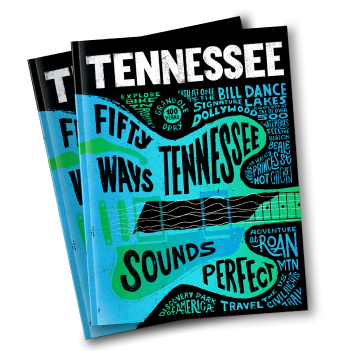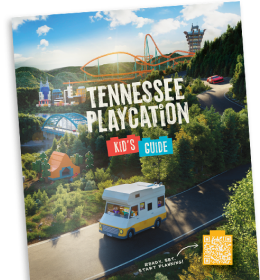
During the Civil War, Nashville was occupied by Union troops, and a large contraband camp was set up in North Nashville called Fort Gillam. The camp was a temporary home to many newly freed slaves and bisecting the Fort was a wagon road that later came to be known as Jefferson Street. In the aftermath of the Civil War, through a new effort to provide education opportunities for African-Americans, Fisk University was built. During its formative years the school inspired some of its students to form the now famous Fisk Jubilee Singers, an all black a cappella group that toured America to raise funds for the college. Their monetary contributions allowed Fisk to purchase the Fort Gillam grounds and Fisk was re-chartered in 1872. Not only did they attain long standing success, but they were invited to play at the White House for then President Ulysses S. Grant and toured Europe, including a performance for Queen Victoria. Queen Victoria is known to have said that with such beautiful voices, they had to be from the Music City capital of the United States, hence the moniker was born.
As year passed, the land on and around Jefferson Street was bought and used for both residential and commercial use by Nashville’s African American residents. The area became a thriving community, and a common thread started popping up all along the street: lots and lots of venues. Intimate “speak-easys,” grand nightclubs, supper clubs, dance halls, beer joints, pool halls and theaters started appearing and thus drew many artists from near and far. Through the “Golden Years” of 1935-65 Jefferson St hosted shows by Aretha Franklin, Count Basie, Muddy Waters, James Brown, Etta James, Otis Redding, Ray Charles, B.B. King and an ongoing list of soul, blues, jazz, gospel, and R&B stars touring the nation. Jimi Hendrix had a residency at the Del Morocco club working in a few different outfits as a back-up player. He cited Nashville as being the place where he really developed and honed his guitar playing proficiency. Residents fondly remember him by his nickname “Marbles,” because he seemingly had lost his. Little Richard frequented the clubs as well, and locals remember hearing the original version of Tutti Frutti there…”Tutti Frutti, good booty.” The community also nurtured local artists like Marion Jones, Nashville’s “Queen of the Blues,” and harmonica virtuoso Deford Bailey, country music’s first African-American star.
Ernie’s Record Mart downtown was a mail-order record store. In the late 40s and early 50s they had a show on WLAC radio called Ernie’s Record Parade, which started spinning all the latest jazz, blues, soul, and gospel music. This, combined with the pioneering Black radio station WVOL that started in 1951, helped bring recognition to the Black artists many White radio stars were actually basing their acts off of. Independent record labels popped up including Bullet, Tennessee, Republic, Excello and more. With the addition of Nashville’s syndicated R&B television shows, The!!!!Beat and Night Train, which predated Soul Train by five years, R&B was swept the nation. The Jefferson Street music scene was in full swing while the country music industry was just getting settled.
Jefferson Street was not only a hotbed for some of the most influential artists in American musical history, but it was also a very tight-knit community. Some club owners were known to help put neighborhood kids through school, particularly students looking to get their Ph.D. at Meharry Medical College. Other locals helped pay for piano lessons, fostering future musical greats. One club owner was greatly involved with the Negro Baseball League and owned a team which a nineteen-year-old Charley Pride played on for a time.
The neighborhood received a number of blows starting in 1952 with the Capitol Hill Redevelopment Project, which relocated 429 families and 279 singles residents. Two major venues, the Bijou Theater, The New Era, plus the trolley shelter and the cab companies were all razed by 1955. In 1963, a new Metro charter went into effect and the nightlife on Jefferson Street was targeted for elimination. A lot of the clubs had gambling rooms in the back, which was a standard practice in both White and Black American businesses during the era. With a large part of the businesses being funded by illegal gambling, the new reform crippled the district financially and a lot of clubs started to close one by one. Then, in 1968, the final blow came with the construction of Interstate 40, which cut straight through the heart of the Jefferson St. district. Traffic was cut off and a few of the last remaining clubs were leveled, including Hendrix’s home the Del Morocco.
Over the last few years a man named Lorenzo Washington has begun efforts to revitalize the musical community on Jefferson Street, while the ever imminent threat of gentrification and redevelopment looms. Mr. Washington, a longstanding North Nashville resident in his seventies, founded a label called Jefferson Street Sound. He has an office on Jefferson and sells memorabilia of a map of the area’s many venues and artists who frequented them. The Elk Lodge, formerly known as “Club Baron” in it’s heyday, has been highlighted by Historical Nashville, Inc as a place of historical importance and has hopes for its preservation. In 2014 the Country Music Hall of Fame held an exhibit called “Night Train to Nashville: Music City Rhythm and Blues, 1945-1970” and Lost Highway released a compilation with the same title. Plans for the National Museum of African American Music are underway, with opening scheduled for 2019. In the meantime you can find educational materials on Black history and culture at Alkebu-Lan bookstore. Alkebu-Lan is located 2721 Jefferson St and is the only African-American owned and operated bookstore in Tennessee.
For the most up-to-date hours and information, please contact Jefferson Street Music District directly.































